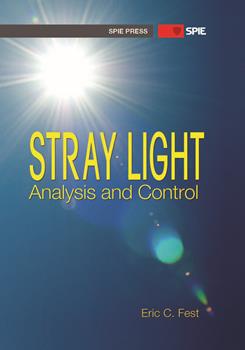In 1741, the great Swiss mathematician Leonhard Euler was asked by King Frederick the Great of Prussia to write a tutorial on natural philosophy and science for his niece, the Princess of Anhalt-Dessau. Euler agreed and began writing the tutorial as a series of letters to the Princess, about one a week, for nearly 250 weeks. These letters were eventually published as a collection and became some of the first popular science writing.
In a letter entitled "Precautions to be observed in the Construction of Telescopes" (shown in the second figure), Euler recommends that the Princess ". . . (enclose the telescope) in a tube, that no other rays, except those which are transmitted through the objective, may reach the other lenses. . . If by any accident the tube shall be perforated ever so slightly, the extraneous light would confound the representation of the object."
He also suggests that she "[. . . ]blacken, throughout, the inside of the telescope, of the deepest black possible, as it is well known that this colour reflects not the rays of light, be they ever so powerful." Though he calls them "diaphragms" and not field stops, Euler goes on to suggest their use as a further means of "diminishing the unpleasant effect of which I have
been speaking." This unpleasant effect is, of course, what we now call stray light, and this letter shows that it was identified as a problem hundreds of years ago. It is remarkable that the methods Euler discussed to control it (i.e., the use of black surface
treatments, field stops, and baffles) are still some of the primary methods used to control it today (see Chapters 6, 8, and 9, respectively). Of course, some things have changed; Euler and the Princess didn't have the massive computing power
we have today, and therefore were unable to predict the stray light performance of a telescope to the accuracy that is now possible. In addition, the occurrence of stray light in their telescope was an "unpleasant effect" and was not as serious a
problem as, say, the loss of scientific data due to stray light in a multi-billion-dollar space-based telescope.
However, the letter shows that the problem and many of its solutions remain the same. The goal of Euler's letter and of this book are similar: to provide optical engineers with the information and analytical tools necessary to design and build
optical systems with sufficient stray light control. In addition to Euler’s letter, there have been hundreds of papers published on the subject, and it is impossible to include the content of all of them here. Therefore, only the content that is
most applicable to the task of optical system engineering is discussed. This is an important distinction, as many previous publications deal with the science of optical scattering and stray light, but fewer address the application of this science
in engineering practice. This book summarizes the important scientific results, providing references for more detailed study, and then applies these theories to the engineering of optical systems. This book also considers the economics of
performing stray light analysis, which is a dimension that is also lacking in the current literature. Sometimes the engineer tasked with performing a stray light analysis has months of time and a large budget, and other times has 15 minutes and
no budget. This book provides tools and solutions for a spectrum of budgets, and quantifies the accuracy associated with each approach.
Eric Fest
Tucson, AZ
February 2013
eric@phobosoptics.com



